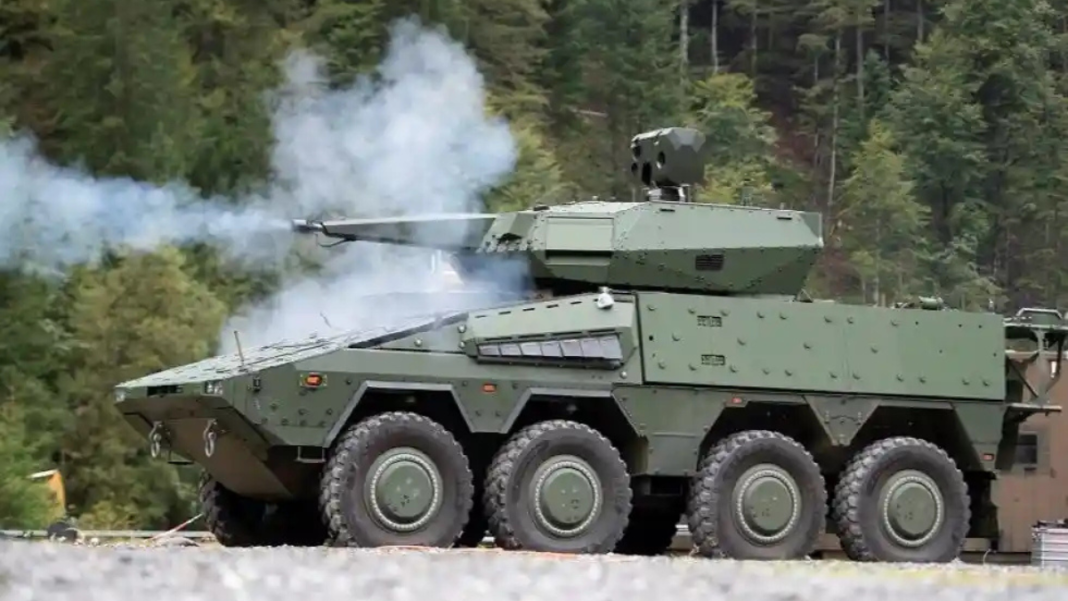In a major move to strengthen Germany’s frontline air defense, lawmakers have approved the use of the Small Anti-Drone Missile (SADM) for the Skyranger 30 armored system. The decision marks a key upgrade for the Bundeswehr, giving soldiers new tools to stop small and miniature drones that are increasingly used in conflicts.
Skyranger 30 to Gain Advanced Anti-Drone Power
The Skyranger 30 is now set to become Germany’s first armored system capable of countering small and very small drones at the frontline. In particular, the Small Anti-Drone Missile will work in combination with the 30-millimeter cannon mounted on the Skyranger 30, allowing the vehicle to detect, target, and destroy drones with high accuracy.
Furthermore, according to the defense ministry, this combination lets the Skyranger 30 protect soldiers and sensitive sites from aerial threats that are difficult to hit with traditional systems. As a result, the upgrade will make the vehicle one of the most advanced short-range air defense platforms in Europe.
At the same time, officials are considering the Skyranger 30 for the European Sky Shield Initiative, a multinational program that aims to improve air defense coordination among European countries. By integrating the Small Anti-Drone Missile, Germany aims to strengthen its contribution to the continent’s shared security and enhance the Bundeswehr’s readiness for fast-changing threats.
Skyranger 30 Approval Part of Larger Military Upgrades
While the Skyranger 30 approval made headlines, lawmakers also cleared several other important defense projects. Among them is the production and delivery of the P13 pistol and its accessories, which will replace the aging P8 sidearm. The defense ministry noted that the new weapon fixes several performance and comfort issues found in the old P8 and provides modern features for soldiers who rely on sidearms as a primary or backup weapon.
Germany’s air medical support will also improve. Modular kits for patient transport using A400M and C-130J aircraft were approved, expanding the country’s medical airlift capacity by 2029. The ministry said this upgrade will greatly improve the Bundeswehr’s ability to transport wounded personnel safely and quickly.
📰 22,500 Turkish Citizens Flee Economic Ruin—Germany Becomes Their Lifeline
Another key approval focuses on the modernization of the German Navy’s RAM launcher systems. The committee agreed to purchase additional RAM Block 2B missiles, scheduled for delivery between 2030 and 2032. These updates will ensure the Navy remains in line with NATO standards and that its ships have a secure long-term parts supply.
New Digital Tools and Secure Communication for Bundeswehr
Lawmakers also renewed a support contract with BWI, the Bundeswehr’s digital services provider, to continue working on major modernization projects. One of the biggest efforts under this contract is the “Digitalisierung Landbasierter Operationen” program, which focuses on modernizing the army’s land-based digital systems. BWI engineers will continue helping the land forces manage this digital transition and improve communication systems used during missions.
Lawmakers approved additional funding for portable radio systems obtained through foreign military sales and for thermal imaging sights that will enhance the performance of MG4 and G36 rifles. The Bundeswehr will also acquire modular fire protection containers, mobile field kitchens, and new secure networking devices under the SINA program.
NATO’s drone wall begins — Poland and Romania deploy Merops to hunt Russian intruders
Germany is also strengthening its communication from space. The German Aerospace Centre signed a contract to operate the Heinrich Hertz satellite mission, which includes a military component. This satellite will boost the Bundeswehr’s secure data transmission and supports a joint project between the Ministry of Defense and the Ministry of Research, Technology, and Space.
This approval signals a major step in Germany’s defense modernization journey. As the Bundeswehr upgrades the Skyranger 30 with Small Anti-Drone Missiles and other critical systems, it is preparing for a future where drone threats, digital warfare, and rapid medical response play a vital role in protecting national and European security.

